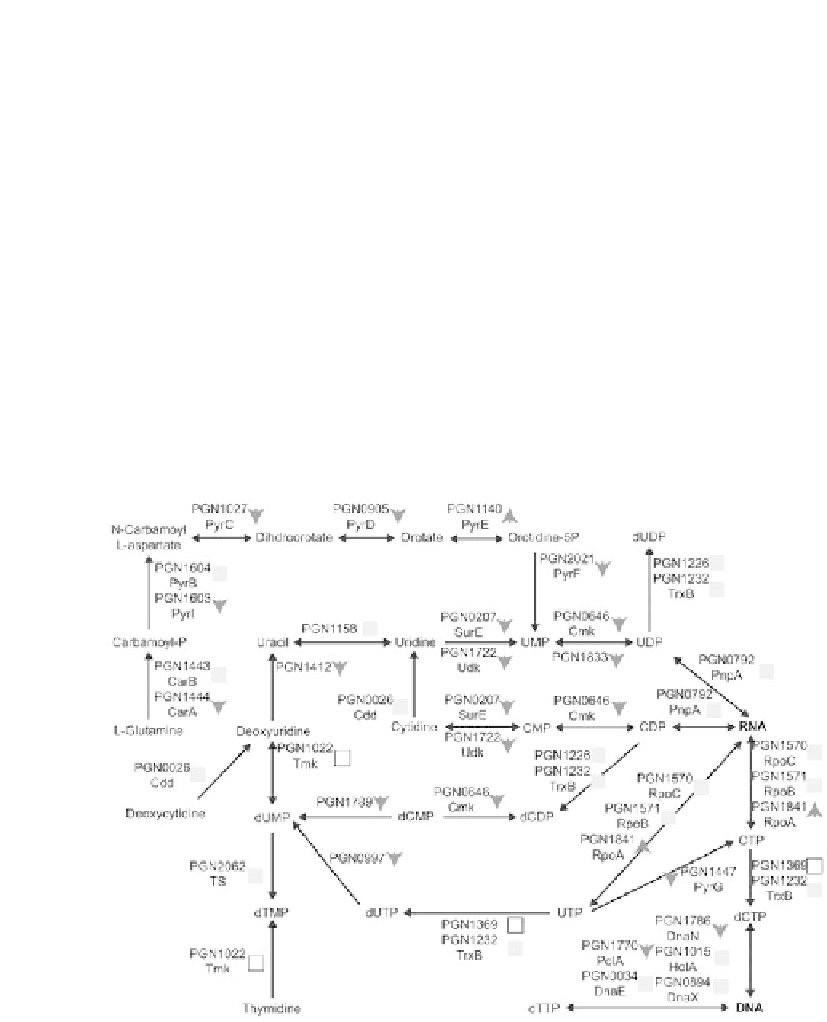Biology Reference
In-Depth Information
allowing reduced cofactor synthesis without reducing expression of the cofactor de-
pendent pathways. Nutritional cross-feeding among members of oral biofi lms is well
established [5], and indeed
P. gingivalis
has been found to utilize succinate produced
by
T. denticola
[39].
Nucleotide Synthesis
Pyrimidine biosynthesis appeared to be reduced in the three species community (Fig-
ure 5) as many of the proteins leading to the production of finished pyrimidine nucleo-
tides have decreased abundance. However, the proteins responsible for incorporat-
ing finished ribonucleotides into RNA show unchanged or increased abundance. As
with vitamin biosynthesis this may be the result of nutrient transfer from the other
organisms in the community.
Porphyromonas gingivalis
can acquire nucleosides and
nucleobases and it has even been suggested that they may represent an important nu-
trient source for
P. gingivalis
[40]. Consistent with uptake of nucleosides and their
precursors, uracil permease (PGN1223) shows increased expression in the three spe-
cies community.
Figure 5.
Pyrimidine biosynthetic pathway, showing protein abundance changes for the
P.
gingivalis-F. nucleatum-S. gordonii
/
P. gingivalis
comparison. The protein names follow the same
conventions as in Figure 4. Green downward arrows indicate decreased abundance in the three
species community. Red upward arrows indicate increased abundance. Yellow squares indicate no
statistically significant abundance change. Empty squares indicate that the protein was not detected
in the proteomic analysis. The RNA and DNA are shown in bold.
















